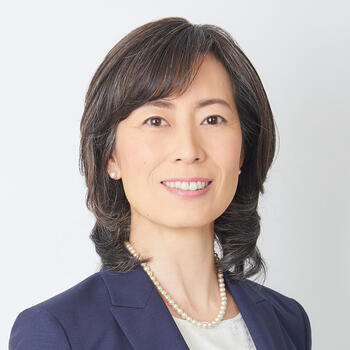Ensuring the equitable representation of minorities and protecting their rights is, of course, a fundamental democratic value and a vital policy objective. Nevertheless, it is now time to approach the issue of diversity not only in terms of balanced representation, but also as a question of effectiveness and innovation. It is especially important to ensure diversity within entities like the Cabinet, which requires a high level of intellectual capacity and judgment.
South Korea is a patriarchal, “super-networked” society that emphasizes ethnic homogeneity and purity. High value is placed on common alma maters, shared regional backgrounds, and family ties. There is a dire need to enhance appreciation for the value of diversity. The era of industrialization called for a homogeneous workforce capable of producing uniform, standardized products. In this context, diversity could hamper efficiency. The new era of the Fourth Industrial Revolution, built on creativity and innovation, will increasingly require a rather heterogeneous workforce. Diversity should be recognized as an essential virtue that underlies innovation and success. The future belongs to societies and organizations that understand the true value of diversity.
From Representation to Innovation
In the United States, diversity is one of the most important considerations not only in companies’ hiring decisions, but also when colleges and universities hire professors or admit students. Pursuing diversity was once regarded as a means of empowering minority groups by ensuring that they had access and representation. However, it is now commonly understood that an organization’s capabilities and achievements cannot be maximized without diversity. There are many ways to achieve diversity. A range of factors is considered, including race and ethnicity, age, gender, personal background, and past experiences. It is believed that an organization can overcome groupthink and dismantle a rigid internal culture only if it is composed of diverse individuals. Put differently, innovation and success depend on diversity. Schools, companies, and government entities all have a department that is responsible for improving diversity, and there are many organizations that now have a chief diversity officer (CDO) in addition to a CEO and CFO.
This is a relatively recent phenomenon in American history. As a nation of immigrants, the United States initially pursued assimilation. It only recognized English as the official language. This began to change in the 1960s with the civil rights movement and the emergence of feminism. There were calls to protect and empower minorities and vulnerable groups, and these efforts were also institutionalized. Affirmative action is perhaps the most prominent legacy of this era.
In 1961, President John F. Kennedy signed Executive Order 10925, introducing affirmative action for federal contractors. Affirmative action sought to proactively counter discrimination by providing preferential treatment to minorities that were disadvantaged on the basis of “race, creed, color or national origin.”[4] There was an initial emphasis on addressing racial discrimination, but this later expanded to countering discrimination on the basis of sex or disability. In essence, this is similar to practices that are well known in Korea: creating quotas for individuals of particular backgrounds and giving extra points in hiring evaluations or admissions decisions. These practices were most commonly used by companies and universities.
Affirmative action has always been controversial in the United States, with opponents calling for its repeal. Some argue that it fails to solve the problem by creating reverse discrimination, while others claim that it generates new forms of discrimination. The former is raised primarily among white men, while the latter is voiced by Asian Americans. It was charged that high school students who worked hard to achieve high scores were disadvantaged in university admissions because schools applied racial quotas. Although the Supreme Court ruled the use of racial quotas in university admissions to be unconstitutional in the Bakke decision (1978), critics allege that prominent universities still maintain tacit quotas for African and Hispanic American applicants. This fall, the Supreme Court is expected to hear arguments in a case brought mainly by Asian American individuals against Harvard University and the University of North Carolina for the use of “race-conscious” admissions programs.[5]
California, where I have lived for many years, is among the most progressive states in the United States. In 1996, however, it became the first state to vote against affirmative action in a statewide referendum when it passed Proposition 209. I was an assistant professor at UCLA at the time, and I vividly remember many heated discussions and debates about this topic among professors, students, local residents, and civil society organizations.
The controversy surrounding affirmative action in California has persisted. Proposition 16, which sought to repeal Proposition 209, was defeated by a wide margin in November 2020. Even in the United States, there is a fraught conversation about pursuing diversity as a means of achieving equitable minority representation. On the other hand, there is a growing recognition that diversity is essential for organizations to innovate and succeed.
Diversity = Innovation
When I write a course syllabus, I include two components in addition to lecture topics, assignments, and grading policies. First, I pledge to observe the Honor Code, which has a long tradition at Stanford. Under the Honor Code, faculty members do not proctor exams. Second, I vow to “respect diversity.” As a professor, I pledge “my intent that students from all diverse backgrounds, perspectives, and situations be well served by this course,” and I affirm that “the diversity that students bring to this class be viewed as a resource, strength and benefit.” I emphasize diversity as an essential element that enhances students’ learning experience. Accordingly, I “present materials and activities that are respectful of diversity,” which includes “gender, sexuality, disability, age, socioeconomic status, ethnicity, race, religion, political affiliation, culture, and so on.” Faculty members are encouraged to include such language on diversity in their syllabi, although it is not a requirement. Nevertheless, this practice is becoming increasingly widespread among faculty members.
Major U.S. companies such as Google and Microsoft have appointed chief diversity officers (CDOs) and strive to attract employees of diverse races, socioeconomic backgrounds, and gender identities. Diversity tends to be based on inherent components (e.g., sex and race), but it can also be expanded through acquired components, such as studying abroad and gaining other life experiences. These companies seek various ways to improve diversity. They believe that diversity enhances productivity and allows the company to better respond to changes in the external environment. Melonie Parker, Google’s CDO, describes her mission as making “Google more reflective of the world around us.”[6] There is a firm conviction that creativity and innovation arise when individuals with diverse backgrounds and experiences exchange new ideas and perspectives.

























